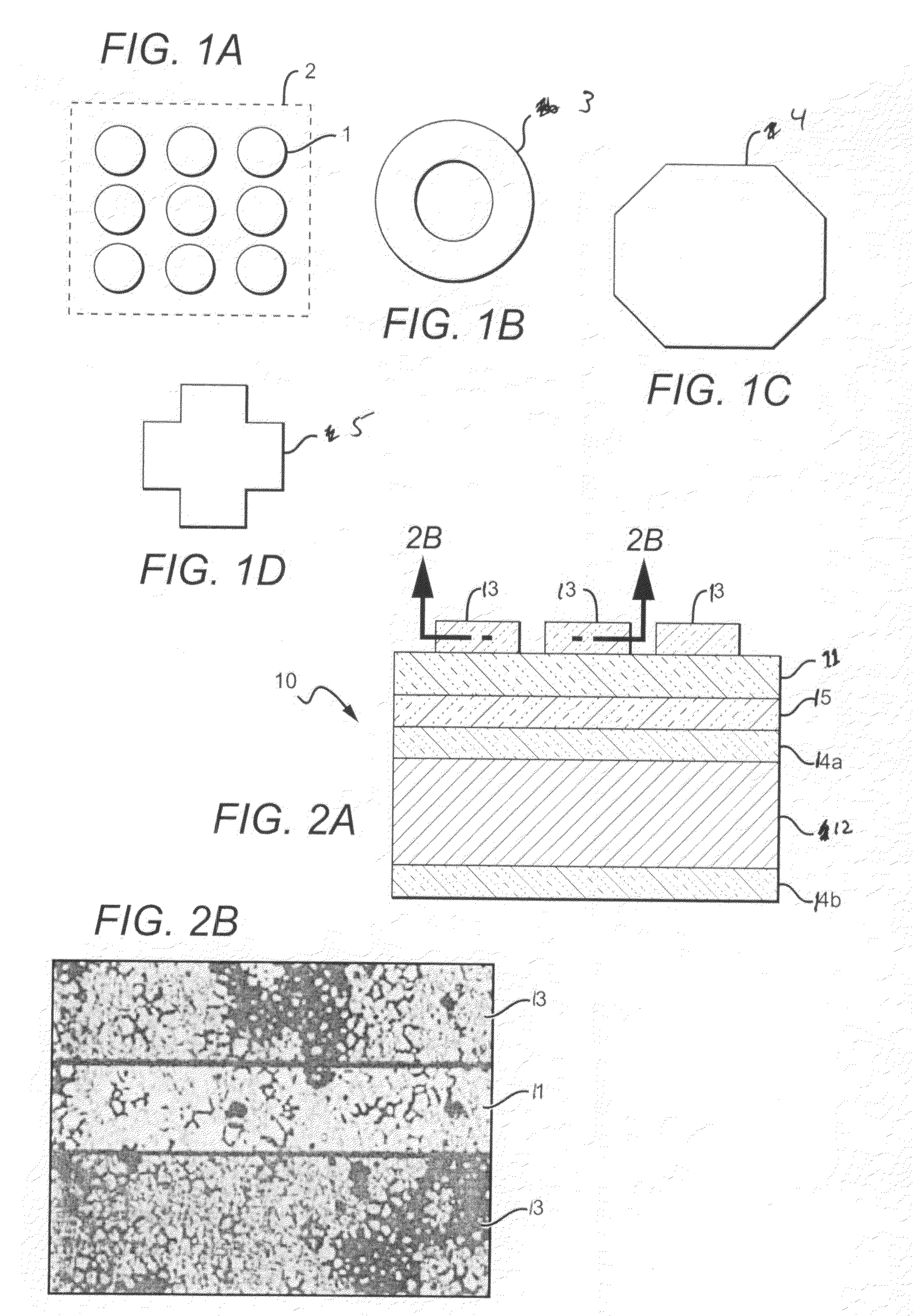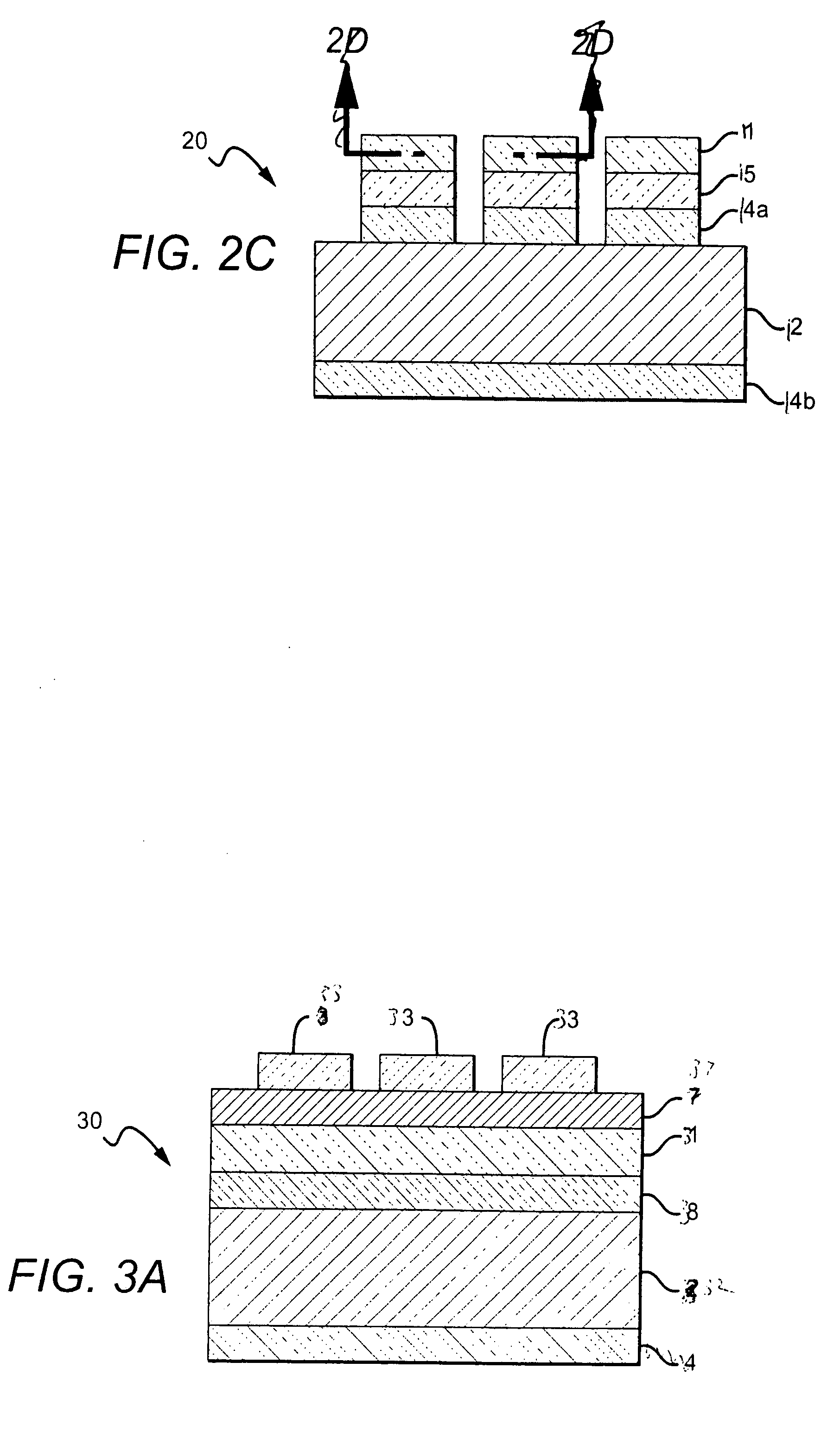Selective wet etching of gold-tin based solder
a wet etching and gold-tin technology, applied in the field of semiconductor/solid-state device manufacturing, semiconductor devices, electrical equipment, etc., can solve the problems of voids in materials, and poor wet etching effect of solder paste,
- Summary
- Abstract
- Description
- Claims
- Application Information
AI Technical Summary
Benefits of technology
Problems solved by technology
Method used
Image
Examples
example 1
[0056]The following describes one embodiment of a method according to the present invention used to etch a structure having an AuSn feature or layer. The structure being etched comprises an AuSn layer that can be formed from a preform that was reflowed onto a thermally oxidized Si carrier wafer having a Ti / Pt / Au blanket metallization. The AuSn layer can have many different thickness and the Si wafer can have many different diameters, with a suitable AuSn layer being 0.5 millimeters thick and the wafer having a 2 inch diameter. A resist mask layer is included on the AuSn layer with a suitable layer comprising commercially available photoresist 220-7 and being approximately 6 μm thick. A standard quartz plate lithography mask layer (i.e. 220-7 photoresist) followed by a 3 minute post-bake at 110° C.
[0057]Two solutions were then used in an alternating fashion for wet etching, as indicated below:
[0058]1. HF / HCl (1:1)—1 min.
[0059]2. Aqua-regia—1 min.
[0060]3. HF / HCl (1:1)—0.5 min.
[0061]4....
example 2
[0067]Many different etching chemistries can be used according to the present invention and can be applied for different amounts of time. As another example, a metallized Si carrier wafer with a sputter AuSn layer that was not reflowed, was etched. Two different approaches were used for wet etching experiments:
1. HF / HCl (1:1)—1 min
2. Aqua-regia—1 min
PUM
 Login to View More
Login to View More Abstract
Description
Claims
Application Information
 Login to View More
Login to View More - R&D
- Intellectual Property
- Life Sciences
- Materials
- Tech Scout
- Unparalleled Data Quality
- Higher Quality Content
- 60% Fewer Hallucinations
Browse by: Latest US Patents, China's latest patents, Technical Efficacy Thesaurus, Application Domain, Technology Topic, Popular Technical Reports.
© 2025 PatSnap. All rights reserved.Legal|Privacy policy|Modern Slavery Act Transparency Statement|Sitemap|About US| Contact US: help@patsnap.com



